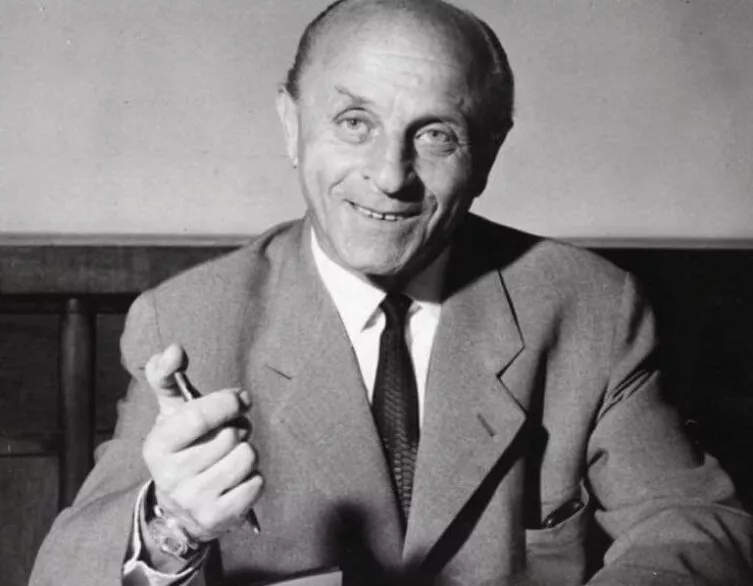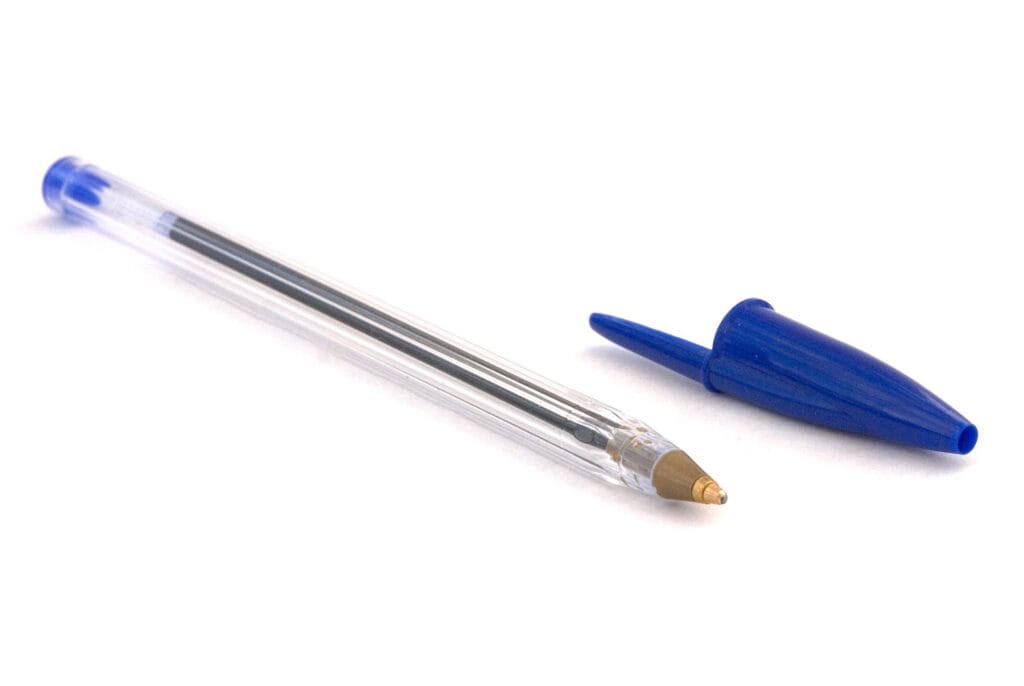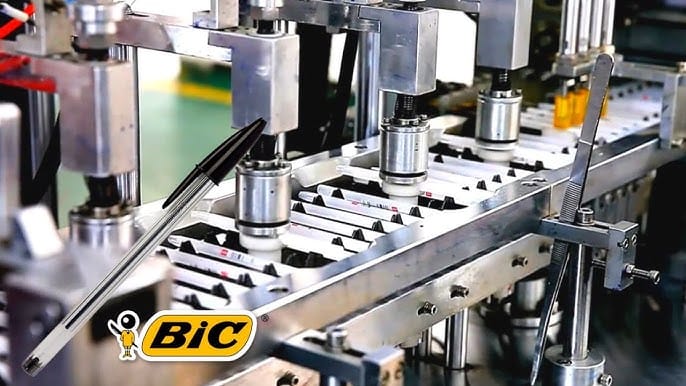The BIC pen, specifically the iconic BIC Cristal, is more than just a writing instrument; it’s a global phenomenon. Found in pockets, purses, desk drawers, and classrooms across the world, this seemingly simple tool represents a revolution in design, manufacturing, and accessibility. It’s an unremarkable yet ubiquitous household and office staple, a low-profile design superstar that became a timeless classic.
Born from a desire for a reliable, affordable alternative to messy fountain pens, the BIC pen democratized writing, making smooth, effortless expression accessible to millions. According to BIC, their ongoing mission is to create high-quality, safe, affordable, and essential products, trusted by everyone – a goal embodied perfectly by their flagship pen.
The Genesis: László Bíró’s Ballpoint Revolution

The story begins not with BIC, but with László Bíró, a Hungarian-Argentinian journalist frustrated with the limitations of fountain pens – the smudging, the leaking, the constant refilling. Inspiration struck in the 1930s while watching children play with marbles in a puddle; he noticed the marbles left a consistent trail of water as they rolled. This sparked the idea for a pen using a tiny rotating ball bearing in its tip to distribute ink.
Collaborating with his brother György, a chemist, Bíró developed a viscous ink and a mechanism where a small ball, held in a socket, would rotate freely, picking up ink from a cartridge and transferring it smoothly onto paper. This design prevented the ink from drying out within the reservoir and allowed for an even flow. Bíró patented his invention in 1938 (with further development leading to a 1943 patent) and, after immigrating to Argentina during World War II, founded Biro Pens of Argentina. Initial commercial attempts faced challenges due to high costs, but the pen gained traction through contracts, like one with the British Air Force.
Marcel Bich’s Vision: Making the Ballpoint Universal
Across the Atlantic, French entrepreneur Baron Marcel Bich recognized the immense potential of Bíró’s invention. In 1944, Bich and his business partner Édouard Buffard established a business creating writing instrument parts on the outskirts of Paris. Bich saw the ballpoint pen manufactured by Bíró in Argentina and acquired the patent rights to the design.
In 1945, Bich and Buffard founded Société PPA (Porte-plume, Porte-mines et Accessoires), which later, in 1953, became Société BIC. Following the advice of advertising expert Pierre Guichenné, Bich dropped the ‘h’ from his name to create the short, memorable, and globally adaptable brand name “BIC,” perfectly suited to the post-war era’s branding trends.
The BIC Cristal: A Masterpiece of Simple Design

In December 1950, Marcel Bich launched his own improved version of the ballpoint pen in France: the BIC Cristal. His goal was clear: to create a pen that was both high-quality and highly affordable. The Cristal, designed by the Décolletage Plastique design team at Société PPA between 1949 and 1950, was a stroke of genius, arriving just in time for the era of mass production.
Its success lay in its elegant simplicity and functional brilliance, often compared to the action of a roll-on deodorant:
Key Design Features
- Hexagonal Barrel: Mimicking the shape of a traditional wooden pencil, this provided strength, prevented the pen from rolling off surfaces, and offered three grip points for writing stability.
- Transparent Body: Made from clear polystyrene, this utilitarian feature cleverly allowed users to see exactly how much ink was left.
- Tiny Hole in Barrel: An often-overlooked detail, this hole equalizes the air pressure inside and outside the pen, ensuring a consistent ink flow via capillary action and preventing leaks.
- Ballpoint Mechanism: Bich invested in Swiss precision technology capable of shaping metal down to 0.01 mm to produce the tiny sphere. Initially stainless steel, the ball was upgraded in 1961 to much harder tungsten carbide, vitrified by heat and milled to extreme accuracy, ensuring a smooth, reliable line. Bich also developed an improved ink with a viscosity that neither leaked nor clogged.
- Efficient Manufacturing: Utilizing cheap plastic (polystyrene barrel, later polypropylene for the cap) and economic processes like injection molding allowed for mass production at incredibly low costs. The polypropylene cap, introduced later, absorbed impacts better, reducing cracking, and since 1991 has featured a small hole to reduce the risk of suffocation if inhaled.
- Colour-Coded Cap: The most obvious visual feature, the cap’s colour indicates the ink colour within.
Democratizing Writing: Mass Production and Global Success

Marcel Bich was relentless in his pursuit of efficiency. He streamlined production processes and used bulk purchasing to keep costs minimal, making the pen accessible to virtually everyone. This focus on affordability, combined with heavy investment in advertising (including hiring poster designer Raymond Savignac in 1952, whose work won awards and created the iconic BIC Boy logo in 1961), fueled rapid growth.
The BIC pen quickly replaced messy fountain pens as the writing tool of choice. BIC expanded aggressively throughout the 1950s and 1960s:
- 1950s: Entered Belgium (1951), Italy (1954), Netherlands, Austria, Switzerland, Germany (1955), Brazil, Spain (1956), UK, Ireland, Australia, New Zealand, South Africa (1957), North America, North Africa, Middle East (1958), Scandinavia (1959).
- 1960s: Expanded further in Africa and the Middle East (1960), entered Japan (1965) and Canada (1967).
In 1959, the BIC pen entered the American market, selling for just 29 cents with the memorable slogan, “writes first time, every time.” By 1965, its reliability earned it approval from the French Ministry of Education for use in classrooms. The result was staggering: by September 2006, BIC had sold its 100 billionth pen, making the Cristal the best-selling pen in the world, selling at a rate of about 57 every second at that time. Each pen offered impressive longevity, capable of writing about 2 kilometers worth of scribble.
An Everyday Icon: Cultural Significance
The BIC Cristal transcended its function to become a cultural icon. Its revolutionary impact on writing habits helped shift the worldwide market from fountain pens to ballpoints. Its simple, functional, and instantly recognizable design earned it a place in the permanent collections of prestigious museums, including the Museum of Modern Art (MoMA) in New York (2001) and the Centre Georges Pompidou in Paris (2006). It is considered the archetypal ballpoint pen, utterly ubiquitous.
Beyond the Cristal: BIC’s Enduring Innovation
While the Cristal remains central, BIC leveraged its success to diversify and innovate continuously. Over the decades, the company expanded its portfolio significantly:
- Stationery Expansion: Launched the M10 retractable pen (1956), Bic Orange fine point (1961), 4-Color pen (1970), BIC Matic mechanical pencil (1988), acquired correction brands Wite-Out® (1992) and Tipp-Ex® (1997), entered the school fountain pen market (2004), and launched BIC Kids drawing/coloring tools (2015).
- New Categories: Introduced lighters (1973), one-piece razors (1975), and later expanded into multi-purpose lighters and advanced shaving systems.
- Sustainability Efforts: Launched BIC® Evolution® pencils from recycled materials (1993), initiated a sustainable development program (2003), launched Ecolutions products (2009), partnered with TerraCycle for recycling (2011), developed ‘Ubicuity’ park benches from recycled pens (2017), and launched the refillable Cristal Re’New (2021).
- Modernization & Acquisitions: Entered digital writing space by acquiring Rocketbook (reusable smart notebooks, 2020), expanded into temporary tattoos (BodyMark®, Inkbox, Tattly), acquired high-end lighter brand Djeep (2020), and even explored augmented technology and the Metaverse (2022-2024).
This constant evolution, marked by strategic acquisitions and adaptation to new markets (like India via Cello, and expanding presence in Africa and Asia) and consumer needs, has kept the BIC brand relevant for over 75 years.
The Double-Edged Sword: Convenience vs. Sustainability
Despite its status as a design classic, the BIC pen’s success highlights a modern dilemma. Its “cheap and disposable” nature, a key factor in its mass appeal, also makes it a “design villain” in the eyes of environmental consciousness. The sheer volume of production leads to significant plastic waste – estimates suggest over 1.6 billion disposable pens are thrown out annually in the US alone.
However, BIC and the wider industry are responding. BIC produces pens from recycled plastic (like the Evolution line), partners with organizations like TerraCycle for collection and reuse of writing instruments, and has introduced more sustainable options like the refillable Cristal Re’New and Ecolutions products with bioplastic handles and recycled packaging. Other designers and companies are also exploring alternatives, from compostable markers (like Carlo Ratti Associati’s “Scribit”) to pens with bodies made of cardboard or metal. The challenge remains to balance the convenience and affordability that made the BIC pen a success with the growing need for environmental responsibility.
Controversy also touched the brand with spin-offs like the “Bic Cristal for Her” in 2012, marketed specifically for women in pink and purple, which provoked widespread ridicule and landed in the Museum of Failure.
The Enduring Legacy of the BIC Pen
From László Bíró’s ingenious idea to Marcel Bich’s manufacturing prowess and marketing vision, the BIC pen fundamentally changed the way the world writes. It transformed the pen from a potentially costly and cumbersome tool into an affordable, reliable, everyday essential. Its simple design, mass production, and global reach democratized writing and creative expression for billions.
The BIC Cristal stands as a testament to the power of purposeful design and innovation. It remains a symbol of accessibility, utility, and the profound impact a seemingly simple object can have on global culture and communication. Even as technology evolves and environmental concerns mount, the legacy of the BIC pen – bringing simplicity and joy to everyday life – endures.











